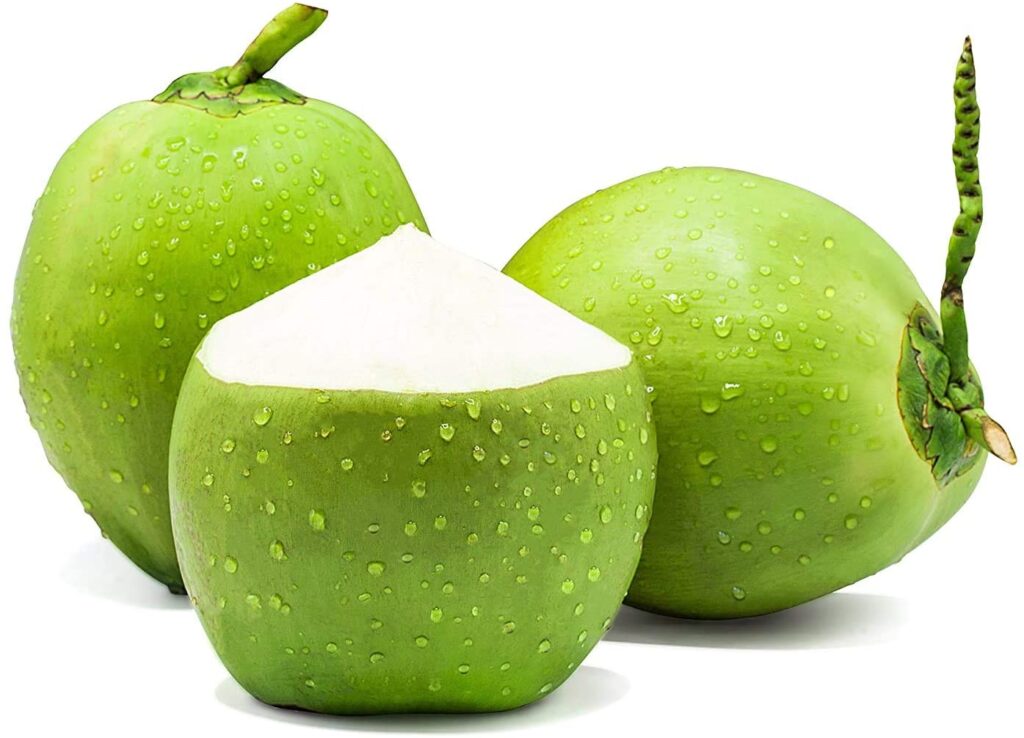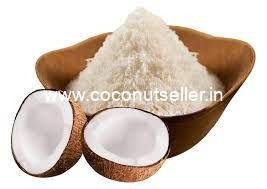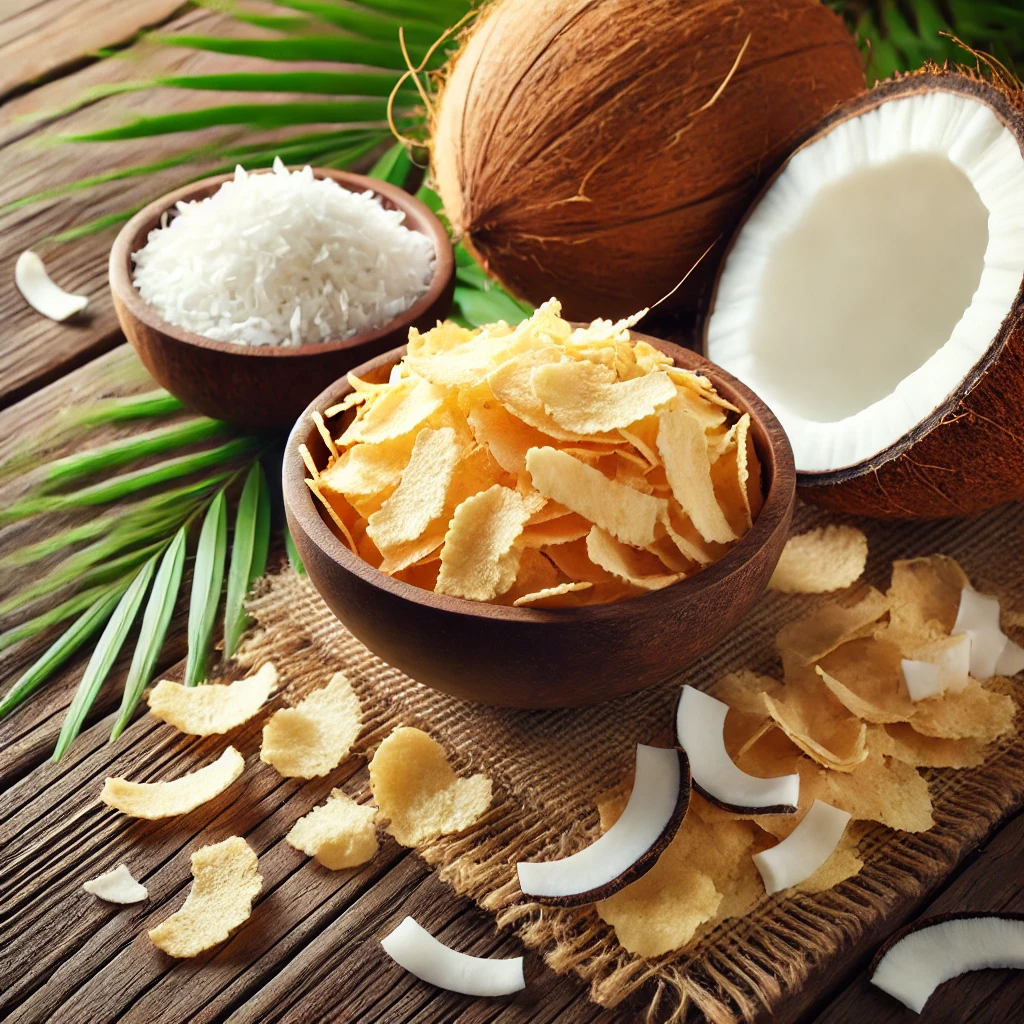
Tender coconut are picked when they’re around 7 months old and contain more water than mature coconuts. If you want to try one for yourself, check your local supermarket to see if they have some fresh coconuts. While the main part of the coconut usually stays protected by the husk, you should still check it for any damage or mold. Once you find the right coconut, you can easily open it at home and enjoy the sweet water and meat.
Step 1

Select a coconut with the least number of brown patches on the husk. Pick up the coconut and turn it in your hands to inspect the husk. Try to find one that has a consistent green/red/biscuit color without any damage or discoloration. If you can’t find one without brown spots, choose the one with the least discoloration since it will usually be fresher.
Avoid coconuts if they have a thick brown husk since they are the most mature and won’t contain as much water.
Tip: Coconuts only refers to the age and not necessarily the color. Some “green” coconuts may have yellow or orange husks instead.
Step 2

Look for a coconut that’s round rather than oblong. Coconuts start off small and round when they begin growing and get more oblong as they mature. Compare the shapes of the coconuts visually and avoid any that have an elongated shape. While you usually won’t find one that’s perfectly round, choose the next closest one.
Round coconuts tend to carry more water than oblong ones.
Step 3

Avoid coconuts that make a sound when you shake them. Hold the coconut up to your ear and shake it vigorously. If you have a young green coconut, it shouldn’t make any noise since it’s filled with water. If you hear liquid sloshing around, then the coconut may be too mature or it could be cracked and leaking.
The coconut will feel heavy for its size due to the water. If you pick up the coconut and it’s very light, the water may have leaked out.
Step 4

Check the top and bottom of the coconut for mold. Find the stem or the flat part on top of the coconut and press on it to feel for any soft spots or mold. Then flip the coconut over and look for any black spots on the bottom. Hold the coconut up to your nose and avoid buying it if it has a musty, moldy odor.
Even if there’s mold on the husk, the bacteria can absorb into the coconut and contaminate the water and meat.
Step 5

See if there are pre-husked coconuts so they’re easier to open. Many grocery stores carry green coconuts with the husk already removed so you don’t have to cut it off later. Look for white coconuts with pointed tops and flat bottoms individually wrapped in plastic. Avoid any pre-husked coconuts that have any discoloration or mold growing on them.
You will usually find the pre-husked coconuts near the mature coconuts in the produce aisle.
For best Quality tender coconut wholesale purchase contact : 9037250400



